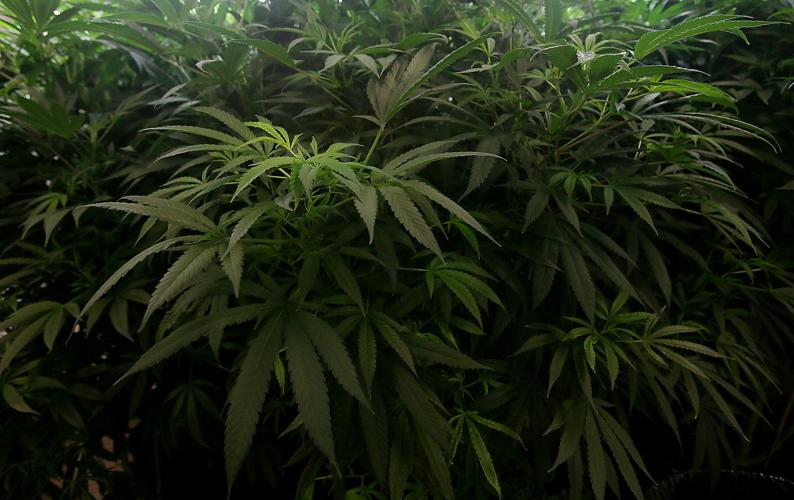This week, the state is taking applications for licenses to print money, practically.
The catch is, you have to propose a money-printing site governed by one geographic principle: proximity to medical-marijuana card holders.
These licenses, of course, are for new medical-marijuana dispensaries. Through July 29, the state is accepting applications for 31 new dispensaries, on top of the 99 existing licenses. They’re the first new dispensary licenses available since the state started issuing them in 2012.
The high financial potential contained in these licenses illustrates the weird link between a substance we consider medicinal under the law now, but that we may turn into a recreational-use product in November. And it points out some of the problems with the legalization initiative we’ll be voting on.
This year’s so-called “Campaign to Regulate Marijuana Like Alcohol” is being supported by the same people who pushed the medical-marijuana law, an initiative passed by Arizona voters in 2010.
After we passed the law, the Arizona Department of Health Services set up rules for issuing licenses. Because marijuana was being dispensed as medicine, the geographic areas used to define where licensed would be issued were defined by public-health boundaries: Community Health Activity Areas, or CHAAs.
The idea was that everyone in a given CHAA could have relatively good access to a medical marijuana dispensary or, if not, be able to grow their own.
Importantly, anyone who got a license had to keep doing business in the area where they were licensed for three years. Then they were free to move elsewhere.
After the three-year period that ended for most licensees in August 2015, a handful did move, always to the Phoenix area. A particularly popular destination: Scottsdale. In May, that East Valley city passed new limitations on how close dispensaries can be to each other.
With this round of new licenses, there will be more, almost all of them in the Phoenix area, two of them in Scottsdale. That’s because the state Health Department picked the location of the next set of marijuana dispensaries based on the concentration of medical-marijuana cardholders.
As a result, of the 31 areas the Health Department selected for new licenses, 25 are in metro Phoenix. Three are rural — in Lake Havasu City, Yavapai County and Superior/Kearny. Three are in the Tucson area — on the northwest side, on the far east side, and in eastern midtown.
If marijuana is to be viewed as medicine — as it is now under state law — it’s strange that the state process would put more dispensaries in areas that already are served, especially metro Phoenix.
Now, it’s long appeared that young men have been using the system just to get high. In April, the last month for which figures are available, 28 percent of all Arizona medical marijuana cardholders were between ages 18 and 30, the highest percentage of any age bracket. And statewide, purchases spiked to more than 400 pounds on Wednesday, April 20 — 4/20, the day of the annual marijuana celebration.
To the extent that there is a real health need for dispensaries, they’re less needed in metro Phoenix and more needed in places like Kingman and Camp Verde that lost or never had dispensaries, marijuana-industry insiders told me.
“Instead of opening up more locations in the city, they should have opened them up in the rural area,” said Vicky Puchi-Saavedra, who owns Earth’s Healing dispensary, 2075 E. Benson Highway. “The smaller cities are getting left behind. They’re not really taking care of the patients.”
Now, leave aside the notion of marijuana as a medicinal product and look at it as what it might become: a substance adults can consume for whatever reason they want, the way people consume it on the black market.
The initiative we are to consider was pushed by the medical-marijuana industry, in part because it benefits current dispensary owners. Other efforts at legalizing marijuana tried to open up the business to new marijuana merchants, but they didn’t gather enough signatures.
The one we’ll be considering gives existing medical-marijuana dispensary licensees the exclusive right to open what people are calling “adult-use” marijuana dispensaries — in other words, recreational pot stores.
Until 2021, additional licenses will be issued only if the number of marijuana dispensaries is less than 10 percent of the number of Series 9 (liquor store) licenses in the state. In other words, current dispensary owners are likely to have a monopoly on the adult-use marijuana market for some time if we pass this initiative, possibly for four years after licenses must be issued in 2017.
And that’s what makes the licensing process so potentially lucrative — and flawed. We are giving licenses to dispense marijuana as medicine largely in areas that are already served by dispensaries, not where the marijuana-medicine is lacking.
And with these licenses, we are offering the opportunity to be on the ground floor of a business selling marijuana to the general public for purposes of getting high, but basing their locations on the density of medical-marijuana patients.
The health department, of course, can’t know how the initiative vote will turn out, and it’s obligated to issue new licenses. But it’s a screwy way to establish who will likely get to sell pot to anyone over 21, and where they can sell it.





